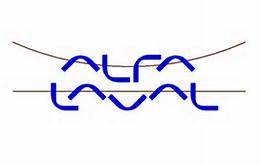
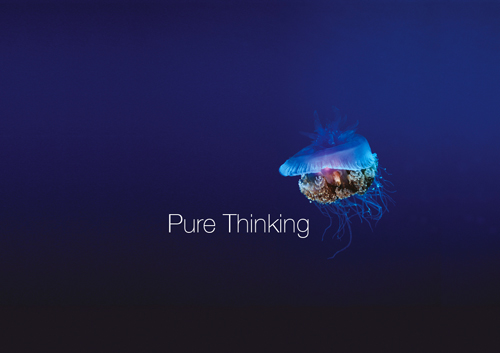 Beyond a doubt, Alfa Laval is today's environmental front-runner among marine equipment suppliers. The company's Pure Thinking portfolio comprises not only compliant solutions for the broadest range of environmental legislation, but also leading technology – or even the only technology – in each respective area. At this year's SMM, Alfa Laval will be showcasing the portfolio's most recent developments, which include the soon-to-be-launched PureSOx 2.0.
Beyond a doubt, Alfa Laval is today's environmental front-runner among marine equipment suppliers. The company's Pure Thinking portfolio comprises not only compliant solutions for the broadest range of environmental legislation, but also leading technology – or even the only technology – in each respective area. At this year's SMM, Alfa Laval will be showcasing the portfolio's most recent developments, which include the soon-to-be-launched PureSOx 2.0.
When Pure Thinking was introduced as a concept in 2004, Alfa Laval solutions were already associated with high efficiency and the reduction of waste. However, there was a growing sense that more would soon be called for when it came to the environment. Indeed, the International Convention for the Control and Management of Ships' Ballast Water and Sediments, adopted by IMO earlier that year, proved to be just one of the seemingly insurmountable hurdles placed before ship owners and operators.
"Ballast water treatment was on everyone's minds a decade ago, in much the way that emission control is today," says Peter Leifland, President Marine & Diesel Division. "There were others besides Alfa Laval with a ballast water solution in development, but already then we were looking at a much bigger picture. We anticipated more and tougher environmental legislation in the years to come, and we knew our customers would have to meet it without damage to their business. Pure Thinking became the platform for meeting that need."
As the name suggests, Pure Thinking began as a strong vision, with only a handful of finalized products and much that was still in the idea stage. PureBallast, for example, was not yet named and just setting out on its first trials at sea. But the formulation of a goal and a systematic approach would prove the key to addressing legislative demands. Ten years later, with US ballast water regulations already in place and Emission Control Areas (ECAs) soon entering into force, Alfa Laval's environmental portfolio is a concrete offering prepared for an increasingly concrete reality.
Unique developments of core technologies
While the Pure Thinking portfolio addresses a wide range of applications, some of which are completely new, the products within it remain true to Alfa Laval's proven strengths. "The principle of Pure Thinking has not been to venture into unproven areas, but rather to meet challenges by applying our core expertise in new ways," says Leifland. "Separation, fluid handling and heat transfer are Alfa Laval cornerstones, even when addressing environmental issues."
PureBilge, the centrifugal separator that became the very first Pure Thinking product, serves as an excellent example. "Centrifugation has been an Alfa Laval hallmark for over a century," says Leifland. "In PureBilge we use it to counteract the vessel's roll and pitch, thereby removing the reliability issues associated with static bilge water treatment solutions." This reliance on core technologies, however, has not kept radical advances from being made within Pure Thinking.
PureBilge was recently joined by PureDry, a very different kind of separator that enables waste fuel recovery in accordance with MEPC.1/Circ.642. PureDry is a paradigm shift in centrifugal separation, combining a solid bowl and disc stack with self-cleaning capabilities. Together, PureDry and PureBilge form an integrated waste oil and bilge water handling system that produces three streams: clean water, a minimal amount of super-dry solids and reusable ISO-quality fuel.
"PureDry is actually the only technology capable of taking advantage of MEPC.1/Circ.642," says Leifland. "In addition to minimizing waste oil volumes, it allows vessels to recoup up to 2% of their consumed fuel volume – which is why it's being adopted rapidly by leading actors in almost every niche of the energy-focused marine industry." Leifland points out that over 100 PureDry systems have been sold in little more than a year of sales.
Environmental protection with energy in mind
For those with energy in focus, there have also been recent developments in PureBallast, a long-time flagship of the Pure Thinking portfolio. PureBallast, which in 2006 became the first ballast water treatment system to reach the market, was launched in its third generation in 2013, bringing with it energy savings of up to 60% over previous versions.
"Ratification of the IMO ballast water convention has taken more time than expected, but in light of US legislation, there is no question that it will happen," says Peter Leifland, President Marine & Diesel Division. "In the meantime, we have continued to develop PureBallast for the best possible fit with today's market demands. Those demands include not only high energy efficiency, but also compactness and flexibility – all aspects that have been greatly improved in PureBallast 3.0."
Beyond the energy savings, PureBallast 3.0 offers space savings of 50% over previous versions and much greater flexibility, thanks to newly optimized reactors in a variety of sizes. Introduced at launch with 300 and 1000 m3/h reactors, the system was expanded with a 600 m3/h reactor in the spring of 2014, enabling a further range of compact and energy-saving configurations.
Meeting the emission challenge


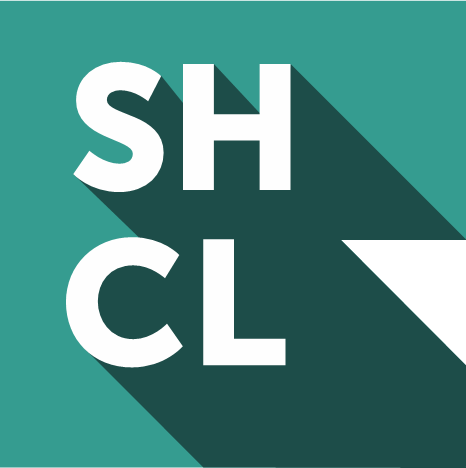
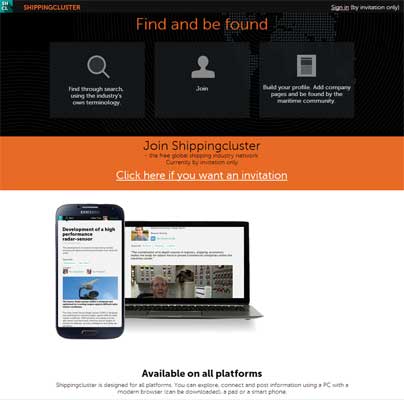 The shipping industry is largely based on networking. Surprisingly, it has not had its own social media platform - until now.
The shipping industry is largely based on networking. Surprisingly, it has not had its own social media platform - until now.
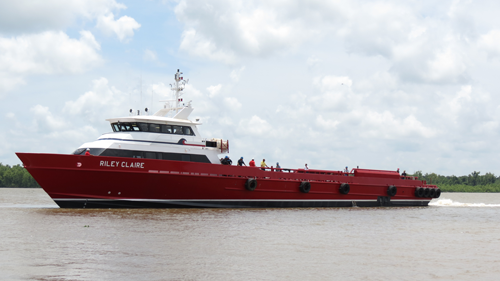 Successful sea trials of
Successful sea trials of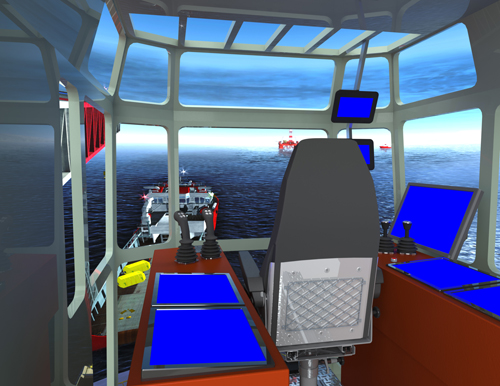 Heerema Marine Contractors (HMC)
Heerema Marine Contractors (HMC)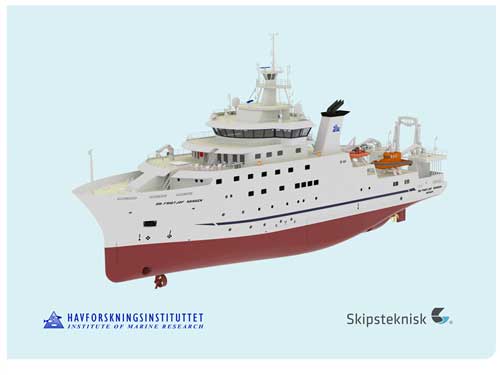 The Institute of Marine Research (IMR)
The Institute of Marine Research (IMR) 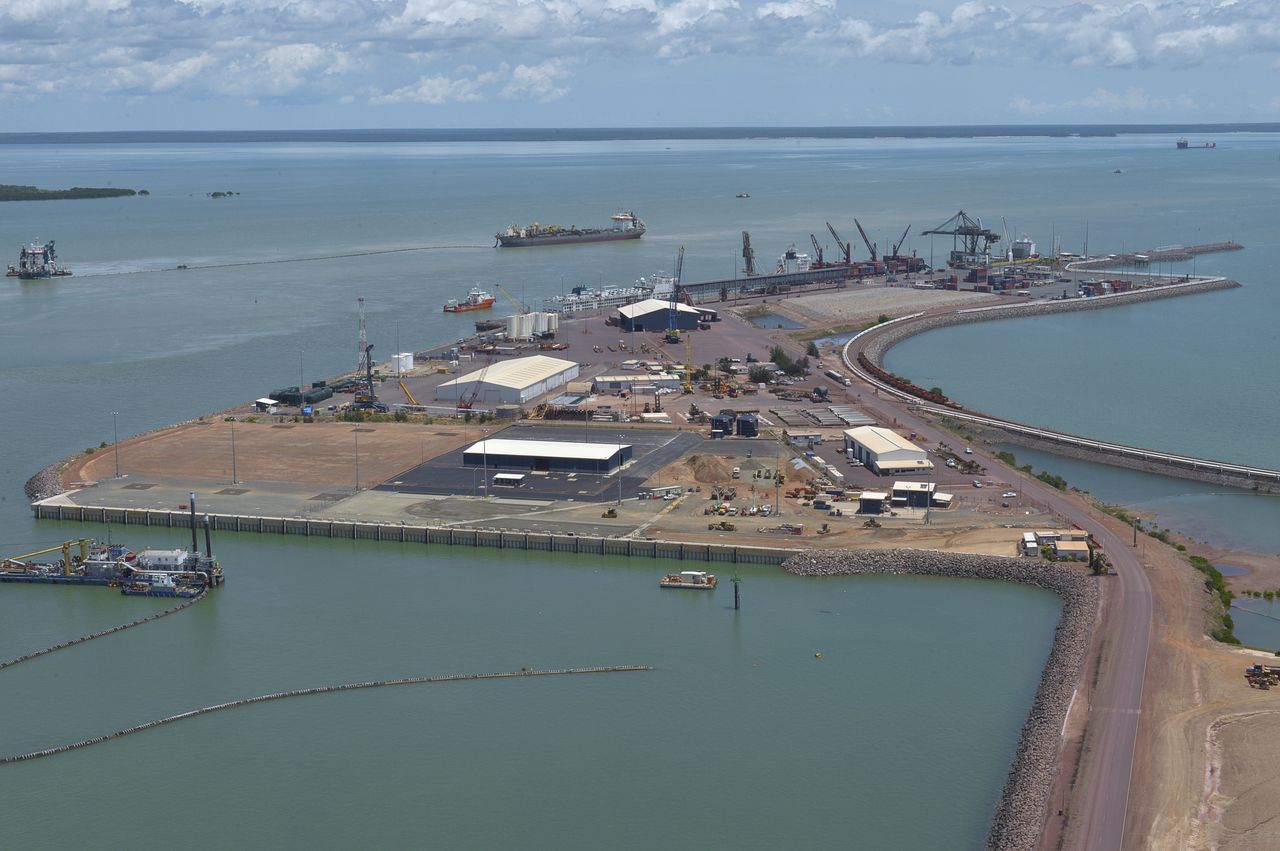 International oilfield support services company ASCO (19th August) opened its new Marine Supply Base in Darwin, Australia. The official opening was attended by the Chief Minister of the Northern Territory, the Hon. Adam Giles at a ceremony on site today.
International oilfield support services company ASCO (19th August) opened its new Marine Supply Base in Darwin, Australia. The official opening was attended by the Chief Minister of the Northern Territory, the Hon. Adam Giles at a ceremony on site today.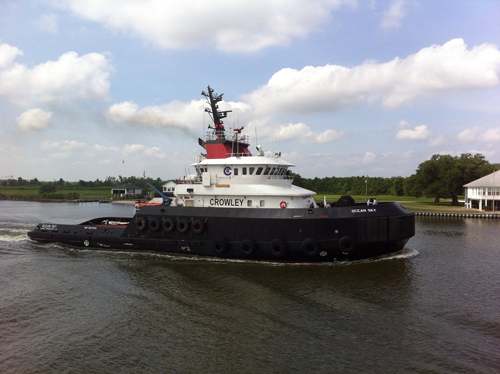 – Ocean Sky –on July 24th, in Houston.
– Ocean Sky –on July 24th, in Houston.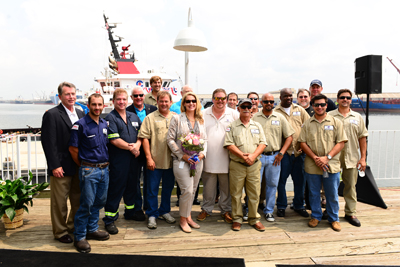 to approximately 140 guests. He was followed by a series of speakers including Joe Huley, vice president, NC Power Systems, and Bruce Greshman, vice president, Heerema Marine Contractors, a Crowley customer who spoke about the 20-year relationship the two companies have enjoyed – a relationship, he remarked was based on "mutual trust, cooperation and responsibility to achieve the same goals."
to approximately 140 guests. He was followed by a series of speakers including Joe Huley, vice president, NC Power Systems, and Bruce Greshman, vice president, Heerema Marine Contractors, a Crowley customer who spoke about the 20-year relationship the two companies have enjoyed – a relationship, he remarked was based on "mutual trust, cooperation and responsibility to achieve the same goals."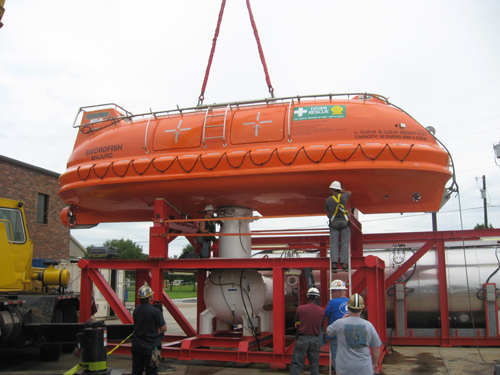 Harkand DSV Upgrade includes Self-propelled Hyberbaric Lifeboat
Harkand DSV Upgrade includes Self-propelled Hyberbaric Lifeboat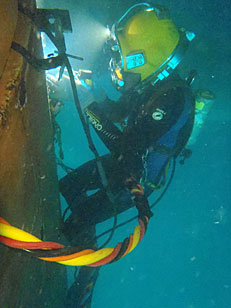 Underwater wet welding
Underwater wet welding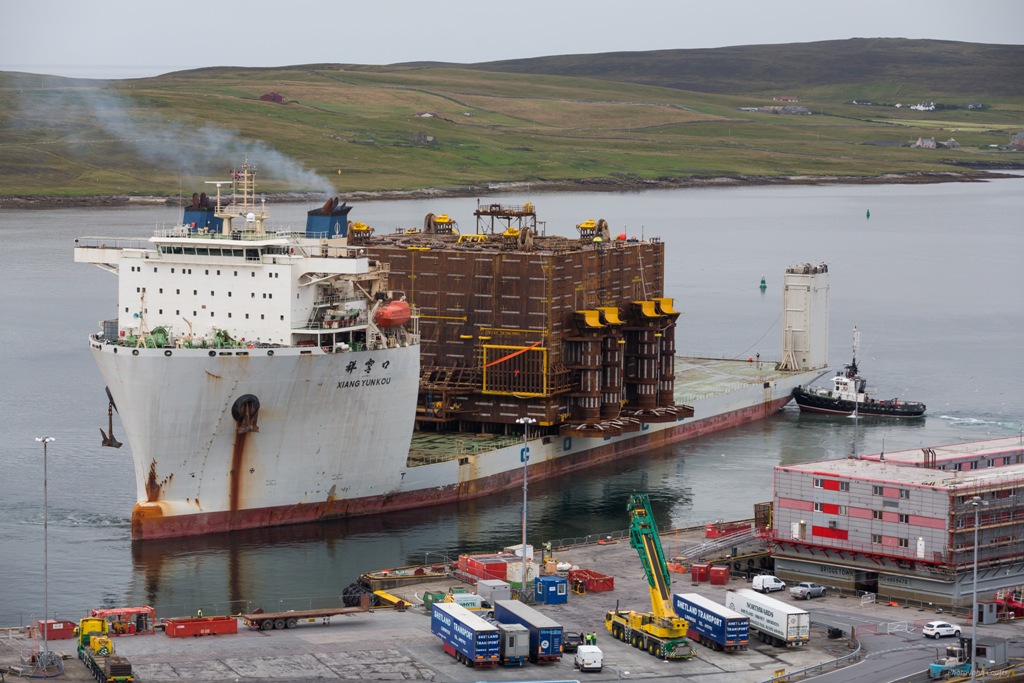 Lerwick Harbour has again demonstrated its deep-water capacity and capabilities, this time by simultaneously accommodating two giant support vessels and the successful offloading of a 10,000 tonne subsea oil storage tank, destined for west of the Shetland Islands.
Lerwick Harbour has again demonstrated its deep-water capacity and capabilities, this time by simultaneously accommodating two giant support vessels and the successful offloading of a 10,000 tonne subsea oil storage tank, destined for west of the Shetland Islands. Lerwick Port Authority Harbour Master, Captain Calum Grains, said: “The successful handling of the Solan tank is another example of Lerwick’s ability to provide sites and support for major offshore projects. To accommodate two vessels the size of Xiang Yun Kou and Thialf simultaneously while servicing other oil and gas projects, cruise ships and daily operations is a clear demonstration of Lerwick’s scope.
Lerwick Port Authority Harbour Master, Captain Calum Grains, said: “The successful handling of the Solan tank is another example of Lerwick’s ability to provide sites and support for major offshore projects. To accommodate two vessels the size of Xiang Yun Kou and Thialf simultaneously while servicing other oil and gas projects, cruise ships and daily operations is a clear demonstration of Lerwick’s scope.
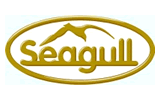 A new module addressing the implications of SOLAS regulations for the recovery of crew and passengers in distress at sea has been released by leading maritime training provider,
A new module addressing the implications of SOLAS regulations for the recovery of crew and passengers in distress at sea has been released by leading maritime training provider, Once again displaying their diversity for use in the domestic petroleum industry, one of
Once again displaying their diversity for use in the domestic petroleum industry, one of 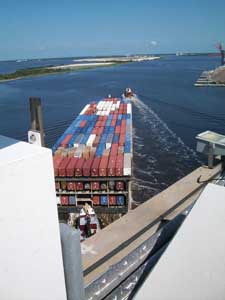 Woods Hole Group
Woods Hole Group
 Beyond a doubt,
Beyond a doubt,  BOURBON
BOURBON